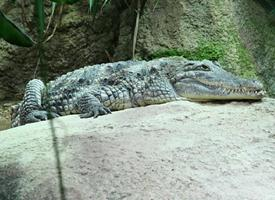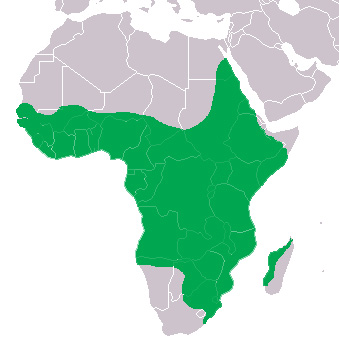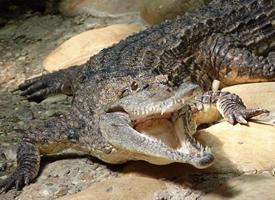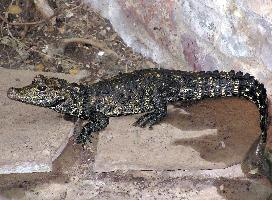
Greutăți și măsuri
| Lungime | 6 m |
|---|
Descrierea animalului
The Nile crocodile (Crocodylus niloticus) is a formidable apex predator and one of the most iconic creatures of Africa's waterways. This species belongs to the family Crocodylidae, which includes other large, dangerous crocodilians. The Nile crocodile is distinguished not only by its impressive size but also by its widespread presence across much of Sub-Saharan Africa, inhabiting rivers, freshwater marshes, and mangrove swamps. These environments provide the perfect backdrop for the lifestyle and hunting methods of this ancient reptile, which has remained largely unchanged for millions of years.Adult Nile crocodiles can reach lengths of up to 5 meters (16 feet), with exceptional individuals exceeding 6 meters (20 feet) and weighing up to 750 kilograms (1,650 pounds). Their bodies are streamlined and powerful, with a robust tail that propels them through water with surprising speed and agility. The skin is armored with bony scales known as scutes, which provide protection against attacks and abrasion. Their coloration varies from olive green to brown, with darker bands on the body and tail, allowing them to blend seamlessly with their aquatic environment.
One of the most striking features of the Nile crocodile is its jaw, equipped with a set of 64 to 68 conical, sharp teeth designed to grasp and hold onto prey. They possess an extraordinary bite force, one of the most powerful among living animals, which enables them to take down a wide range of prey, including fish, reptiles, birds, and mammals. Nile crocodiles are known for their ambush hunting technique, lying in wait just below the water's surface before launching at unsuspecting prey with explosive speed.
Reproduction in Nile crocodiles involves elaborate courtship rituals and fierce competition among males for access to females. Females lay eggs, which they bury in sandy banks or in mounds of vegetation, and exhibit remarkable parental care, guarding the nest site diligently against predators and assisting the young to water upon hatching. The hatchlings are precocial but remain vulnerable to a variety of predators, including birds and other crocodiles.
Despite their fearsome reputation, Nile crocodiles play a crucial ecological role as apex predators, helping to maintain the balance of ecosystems by controlling the population of other species. However, they are not without their own challenges. In some regions, Nile crocodiles face threats from habitat loss, pollution, and conflict with humans, particularly in areas where they are hunted for their skin or where they pose a threat to livestock and human lives.
Nile crocodiles have a complex relationship with humans, featuring prominently in the mythology and folklore of cultures across Africa. They are respected and feared, seen as both powerful deities and formidable adversaries. In modern times, they attract significant interest from ecotourism, contributing to conservation efforts and raising awareness about the importance of preserving Africa's rich biodiversity.
In conclusion, the Nile crocodile is a remarkable creature, a survivor from ancient times that continues to thrive in the rivers and wetlands of Africa. Its adaptability, formidable hunting skills, and complex social behaviors make it one of the most interesting and respected animals in the natural world. Conservation efforts are essential to ensure that future generations can continue to marvel at these magnificent reptiles in their natural habitats.
Harta răspândirii

Animale similare
Fotografii noi cu animale
Top 10 animale
- Dolphin gull (Leucophaeus scoresbii)
- Diana monkey (Cercopithecus diana)
- Moustached guenon (Cercopithecus cephus)
- Stone loach (Barbatula barbatula)
- Greek tortoise (Testudo graeca)
- Galápagos tortoise (Geochelone nigra complex)
- Japanese macaque (Macaca fuscata)
- Russian tortoise (Testudo horsfieldii)
- Common flying dragon (Draco volans)
- Galápagos penguin (Spheniscus mendiculus)


